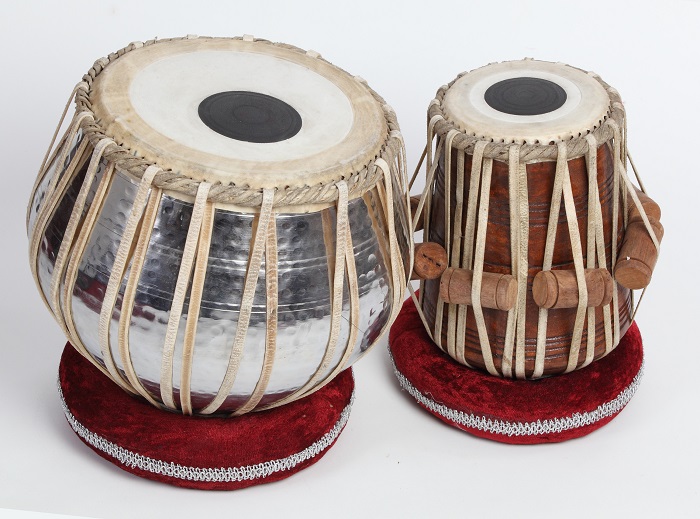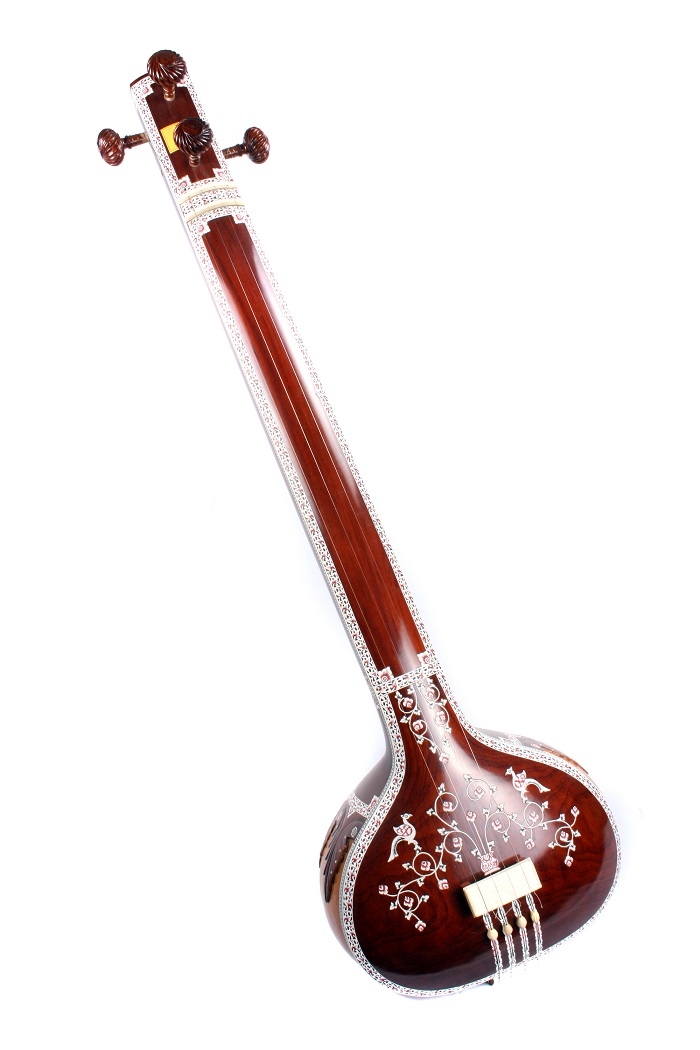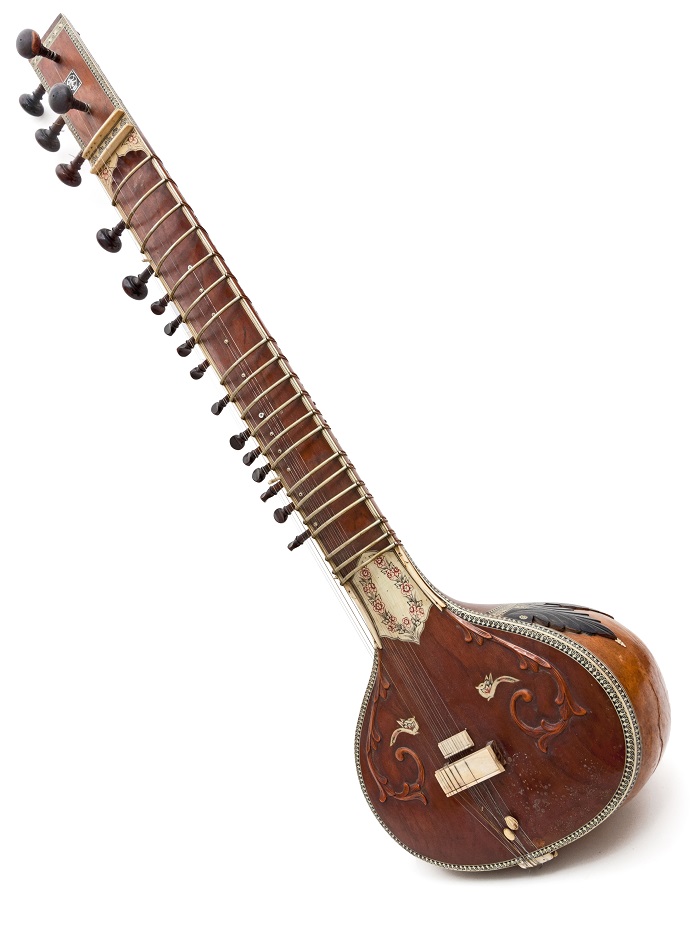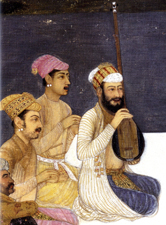
History of the Instruments
The instruments used to accompany the Vidyadhar Vyas listening example, tablā and tambūrā, also point to particular historical developments in Indian music. The tambūrā is the older instrument. It is a long-necked lute, an instrument-type introduced to India by musicians from Iran and Central Asia following the conquest of the region by Muslim invaders (12th-13th centuries). Originally these instruments were used to play melody, and the modern sitār also has its origins in this type.
Composer: Vidyadhar Vyas
-
"Khyāl in Rāga Mīyān kī Malhār"
The picture on the left shows a group of 17th-century singers, one of whom plays a tambūrā. Notice that he is not using the instrument melodically: he plucks the open strings with one hand, and supports the instrument with the other. This is how the tambūrā is used today, to produce a continuous drone articulating the tonic and fifth of the rāga at the pitch chosen by the soloist. (Notice also that the other singers are using their hands to clap the main beats of the tāla.) The modern tambūrā is larger, and is usually rested on the ground, or in the player's lap.
Pictures from the 17th century or earlier show that the horizontal, barrel-shaped drum pakhāvaj was generally used for accompanying classical music at that time.
The tablā, a pair of small vertical drums, was developed in the 18th century as an instrument for accompanying classical music, probably in the Panjāb region of north-western India. It is now used for accompanying most styles of North Indian classical music, both vocal and instrumental, except for the dhrupad style, which is still accompanied by the older pakhāvaj. The lighter tone and higher pitch of the tablā make it suitable for accompanying quiet instruments such as the sitār, and more delicate vocal styles such as khyāl. The deep pitch and loud volume of the pakhāvaj make it suitable for accompanying the robust dhrupad vocal style.













